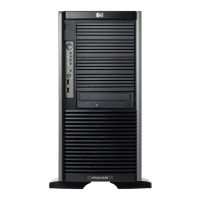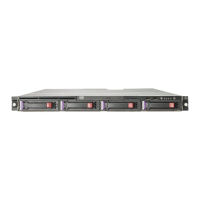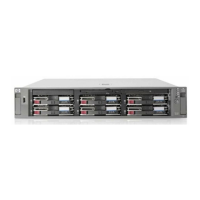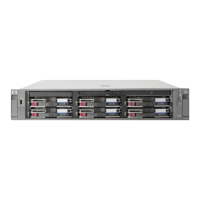Switc h-assiste
dLoadBalancingwithFaultTolerance(SLB)
Switch-assiste
d Load Balancing with Fault Tolerance (SLB) is a team type tha t allows full transmit and
receive load ba
lancing. SLB requires the use of a switch that supports some form of Port Trunking (for
example, EtherChannel, MultiLink Trunking, and so on). SLB does not support switch redundancy since all
ports in a team must be connected to the same switch. SLB is similar to the 802.3ad Dynamic team type
discussed late
r.
Transmit Load Balancing with Fault Tolerance (TLB)
Transmit Load Balancing with Fault Tolerance (TLB) is a team type that allows the server to load balance
its transmit traffic. TLB is switch independent and supports switch fault tolerance by allowing the teamed
ports to be connected to more than one switch in the same LAN. With TLB, trafficreceivedbytheserveris
not load balanced. The primary teamed port is responsible for receiving all traffic destined for the server.
In case of a failure of the primary teamed port, the NFT mechanism ensures connectivity to the server
is preserved by selecting another teamed port to assume the role.
Transmit Load Balancing with Fault Tolerance and Preference Order
Transmit Load Balancing with Fault Tolerance and Preference Order is identical in almost every way to
TLB. The only difference is that this team type allows the server administrator to prioritize the order in
which team
ed ports should be the Primar y teamed port. This ability is important in environments where
one or m ore teamed ports are more preferred than other ports in the same team. The need for ranking
certain teamed ports better than others can be a result of unequal speeds, better adapter capabilities (for
example, higher receive/transmit descriptors or b uffers, interrupt coalescence, and so on), or preference
for the team’s Primary port to be located on a specificswitch.
Network Fault Tolerance Only (NFT)
Network Fault Tolerance (NFT) is the foundation of HP ProLiant N etwork Adapter Teaming. In NFT mode,
from t wo to eight teamed ports are teamed together to operate as a sing le virtual network ad apter.
However, only one teamed port—the Primary teamed port—is used for both transmit and receive
communication with the server. The remaining adapters are considered to be stand-by (or secondary
adapters) an d are referred to as Non-Primary teamed po r ts. Non -Primar y teamed ports remain idle
unless the Primar y teamed port fails. All teamed por ts may transmit and receive heartbeats, including
Non-Primary adapters.
The fault-tolerance feature that NFT represents for H P P roLiant Network Adapter Teaming is the only
feature found in every other team type. It can be said that the foundation of every team type supports NFT.
Network Fault Tolerance Only with Prefere nce Order
Network Fault T olerance Only with Preference Order is identical in almost every way to NFT. The only
diffe
rence is that this team type allows the server administrator to prioritize the order in which teamed
ports should be the Primary teamed port. This ability is impor tant in environments where one or m ore
teamed ports are m ore preferred than other ports in the same team. The ne ed for ranking certain teamed
ports better than others can be a result of unequal speeds, better adapter capabilities (for example,
high
er receive/transmit descriptors or buffers, interrupt coalescence, and so on), or preference for the
tea
m’s Primary p ort to be located on a specificswitch.
Transmit load balancing methods (algorithms)
All load-balancing team types (TLB, SLB, 802.3ad Dynamic, and Dual Channel) load balance transmitted
frames. There is a fundamental decision that must be made when determining load bala ncing
mechanisms: whether or not to preserve frame order.
Frame order preservation is important for several reasons—to prevent frame retransmission because
frames arrive out of order and to prevent performance-decreasing frame reordering within OS protocol
stacks. In order to avoid frames from being transmitted out of order when communicating with a target
network device, the team’s load-balancing algorithm assigns outbound conversations to a particular
HPProLiantML350G5StorageServer
115

